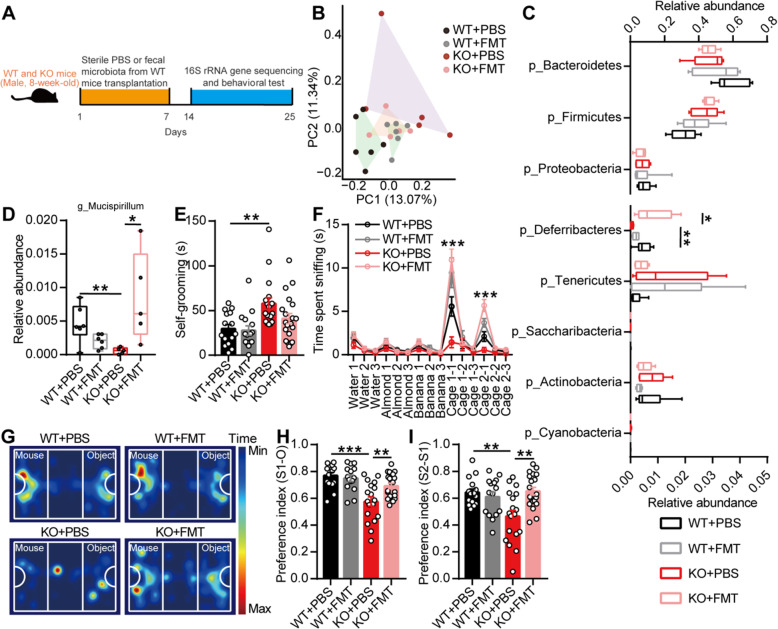Fig. 4.
Transplantation of the fecal microbiota from wild-type mice ameliorated autism-like behavior in adult EphB6-deficient mice. a Schematic of the the fecal microbiota transplantation. The 8-week-old male WT and KO mice were orally gavaged with the fecal microbiota from 8-week-old male WT mice (eight healthy mice from at least three cages) or sterile PBS for 1 week. After 1 week, the fecal microbiota of the treated WT and KO mice were sequenced (b–d) and behavioral tests were conducted with an interval of at least 2 days (e–i). b–d 16S rRNA gene sequencing of the fecal microbiota from mice. Principal coordinates analysis of Bray-Curtis distance (b), the relative abundance of Deferribacteres (c) at phylum level, and the relative abundance of Mucispirillum (d) at genus level were showed. At phylum level, the range of 0–0.8 on x axis was used for the relative abundance of p_Bacteroidetes, p_Firmicutes, and p_Proteobacteria and the range of 0–0.05 on x axis was used for other bacteria. n = 6, 6, 5, 5 mice respectively. e–i Self-grooming test (e), olfactory habituation/dishabituation test (f), and three-chambered social approach task (g–i) were performed. n = 15, 15, 18, 20 mice respectively. Data shown are mean ± SEM or median ± IQR. One-way ANOVA (e, h, i), Kruskal-Wallis test (c, d), mixed design ANOVA with genotype as independent factor and stimuli/trials as repeated-measure factor (f), anosim analysis (b). *p < 0.05; **p < 0.01; ***p < 0.001. WT EphB6+/+ mice, KO EphB6−/− mice, FMT fecal microbiota transplantation, PBS phosphate-buffered saline. Statistical values are presented in Additional file 3: Table S2

